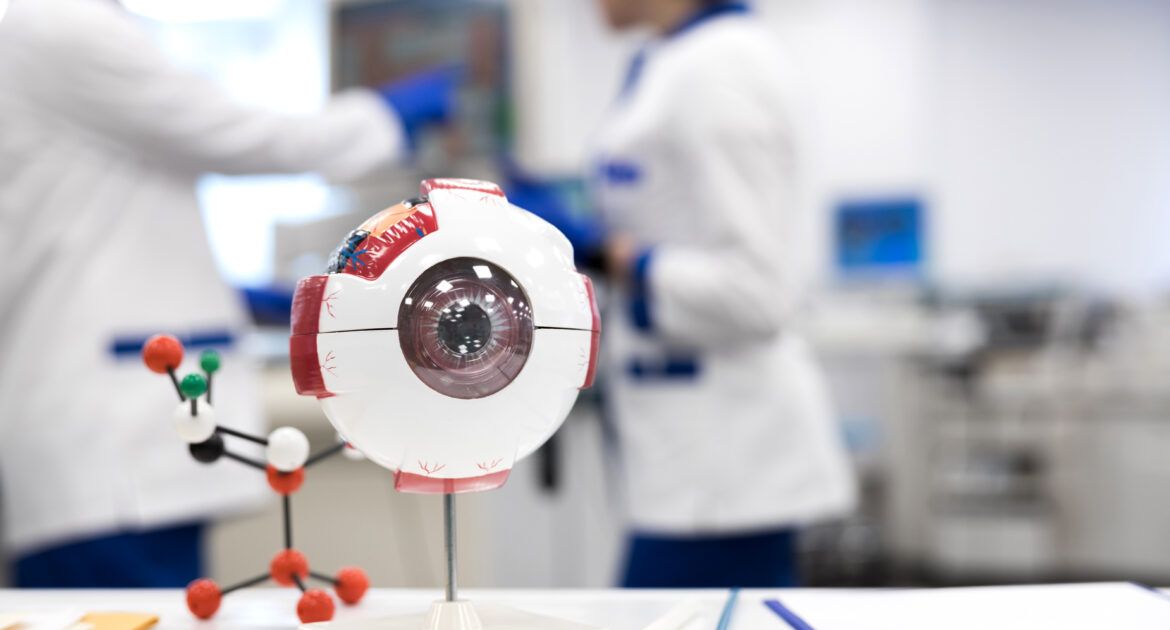Explore our jobs profile for Biophysics to help support you on your career journey and job search.
Known as the ‘bridging science,’ biophysics is an interdisciplinary field which brings together scientists and academics from physics, biosciences, chemistry, mathematics, engineering and materials science.
What is Biophysics?
Biophysics applies the principles and methods used in physics to understand how biological systems work.
It aims to understand the mechanisms behind how cell components move and interact.
Researchers in this field create and develop computer modelling programs and techniques to visualise the patterns of viruses, complex molecules and proteins.
Their work is vital to a diverse range of sectors including medicine, agriculture, bioengineering and biotechnology.
Biophysics Jobs
Biophysicists work in higher education, healthcare, biotechnology industries, tech startups and in engineering and pharmaceutical companies.
If you’re interested in higher education teaching and research roles, biophysics is an integral component of biological sciences degree programmes.
Biophysics lecturers teach students and conduct research across multiple disciplines and schools.
Duties include:
- Delivery of lectures and lab-based classes to undergraduate and postgraduate students across STEM disciplines.
- Curriculum and module development and design.
- Supervision of student projects.
- Undertaking individual and collaborative research in an area aligned with the institution’s research priorities.
- Publishing research outcomes and compiling funding proposals.
- Engaging in knowledge exchange and enterprise with academic and business communities.
How to Become a Biophysics Lecturer
You will need to achieve the following qualifications, experience and knowledge before you consider a lecturing career in this highly specialised field:
Essential qualifications
- A first degree in biological or physical sciences.
- A PhD in biophysics or related areas, such as molecular biology, physics or bioengineering.
- A higher education teaching qualification and/or fellowship with Advance HE (or commitment to achieve on-the-job).
Experience and knowledge
Most lecturers will have postdoctoral research experience and a publication record commensurate with their career stage.
Having high-level programming, modelling and bioinformatics knowledge would be essential for any biophysics teaching and/or research role.
You would also need to demonstrate how you would deliver comprehensive teaching, learning and assessment across multiple departments and courses.
What’s the pay for a biosciences lecturer?
The average starting salary for a biosciences lecturer in higher education is around £40,923 to £48,087 p.a., depending on qualifications and experience.
What can it lead to?
On completion of several years as a lecturer, you could apply for a senior lectureship, associate professor position or a senior research fellowship.
Biophysics expertise is highly sought after in industry research, so you might decide to pursue a senior research position within the commercial sector.
Where can I find jobs?
In the UK, biophysics is usually taught as part of molecular biology or biochemistry courses.
However, biophysics specialists are in demand across a range of STEM disciplines.
Your ability to secure a teaching and research position will depend on how your expertise aligns with current and future programmes.
New biosciences lecturing jobs are added to jobs.ac.uk all the time.
Get the latest jobs straight to your inbox by signing up for a jobs-by-email alert and check out the rest of our Careers Advice pages for tips and resources.
Discover Biophysics Jobs with jobs.ac.uk.
Related job profiles:
- Molecular Biology jobs
- Cell Biology jobs
- Nanotechnology jobs
- Molecular Epidemiology jobs
- Bacteriology jobs





Leave a Reply